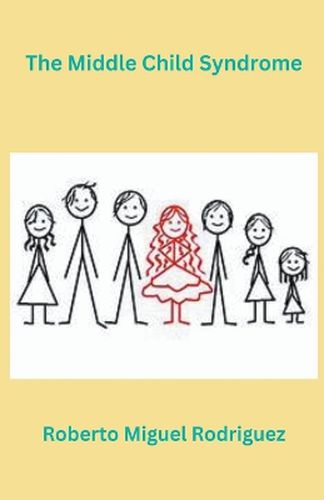Readings Newsletter
Become a Readings Member to make your shopping experience even easier.
Sign in or sign up for free!
You’re not far away from qualifying for FREE standard shipping within Australia
You’ve qualified for FREE standard shipping within Australia
The cart is loading…






This title is printed to order. This book may have been self-published. If so, we cannot guarantee the quality of the content. In the main most books will have gone through the editing process however some may not. We therefore suggest that you be aware of this before ordering this book. If in doubt check either the author or publisher’s details as we are unable to accept any returns unless they are faulty. Please contact us if you have any questions.
Navigating the labyrinth of child development has always been a task for educators, but understanding the nuances related to birth order can be particularly challenging. "The Middle Child Syndrome: A Guide for Educators on Understanding Its Psychological Effects" delves into the unique experiences and challenges faced by middle children in families.
Key aspects covered in this comprehensive guide include:
Birth Order Psychology: An introduction to the theories of birth order and how they have evolved over time.
Defining the Middle: Characteristics often associated with the middle child, separating myth from reality.
Overlooked and Outshone: The dynamic interplay between the eldest's responsibility, the middle's adaptability, and the youngest's novelty.
Seeking Identity: How middles often carve out niches to distinguish themselves from their siblings and the potential academic implications of this search for uniqueness.
Emotional Landscape: Insights into the emotional needs of middle children, including feelings of exclusion, rivalry, and belonging.
Classroom Dynamics: Practical tips for educators on recognizing the signs of middle child syndrome and addressing it constructively in a classroom setting.
Building Resilience: Strategies to empower middle children, helping them harness their strengths and cultivate a positive self-image.
Engaging Families: Ways for educators to communicate and collaborate with families to provide holistic support for middle siblings.
Infused with real-life anecdotes, evidence-based research, and interactive exercises, this book serves as a beacon for educators. It guides them in creating an inclusive classroom environment where every child, regardless of their birth order, feels seen, heard, and valued.
$9.00 standard shipping within Australia
FREE standard shipping within Australia for orders over $100.00
Express & International shipping calculated at checkout
This title is printed to order. This book may have been self-published. If so, we cannot guarantee the quality of the content. In the main most books will have gone through the editing process however some may not. We therefore suggest that you be aware of this before ordering this book. If in doubt check either the author or publisher’s details as we are unable to accept any returns unless they are faulty. Please contact us if you have any questions.
Navigating the labyrinth of child development has always been a task for educators, but understanding the nuances related to birth order can be particularly challenging. "The Middle Child Syndrome: A Guide for Educators on Understanding Its Psychological Effects" delves into the unique experiences and challenges faced by middle children in families.
Key aspects covered in this comprehensive guide include:
Birth Order Psychology: An introduction to the theories of birth order and how they have evolved over time.
Defining the Middle: Characteristics often associated with the middle child, separating myth from reality.
Overlooked and Outshone: The dynamic interplay between the eldest's responsibility, the middle's adaptability, and the youngest's novelty.
Seeking Identity: How middles often carve out niches to distinguish themselves from their siblings and the potential academic implications of this search for uniqueness.
Emotional Landscape: Insights into the emotional needs of middle children, including feelings of exclusion, rivalry, and belonging.
Classroom Dynamics: Practical tips for educators on recognizing the signs of middle child syndrome and addressing it constructively in a classroom setting.
Building Resilience: Strategies to empower middle children, helping them harness their strengths and cultivate a positive self-image.
Engaging Families: Ways for educators to communicate and collaborate with families to provide holistic support for middle siblings.
Infused with real-life anecdotes, evidence-based research, and interactive exercises, this book serves as a beacon for educators. It guides them in creating an inclusive classroom environment where every child, regardless of their birth order, feels seen, heard, and valued.